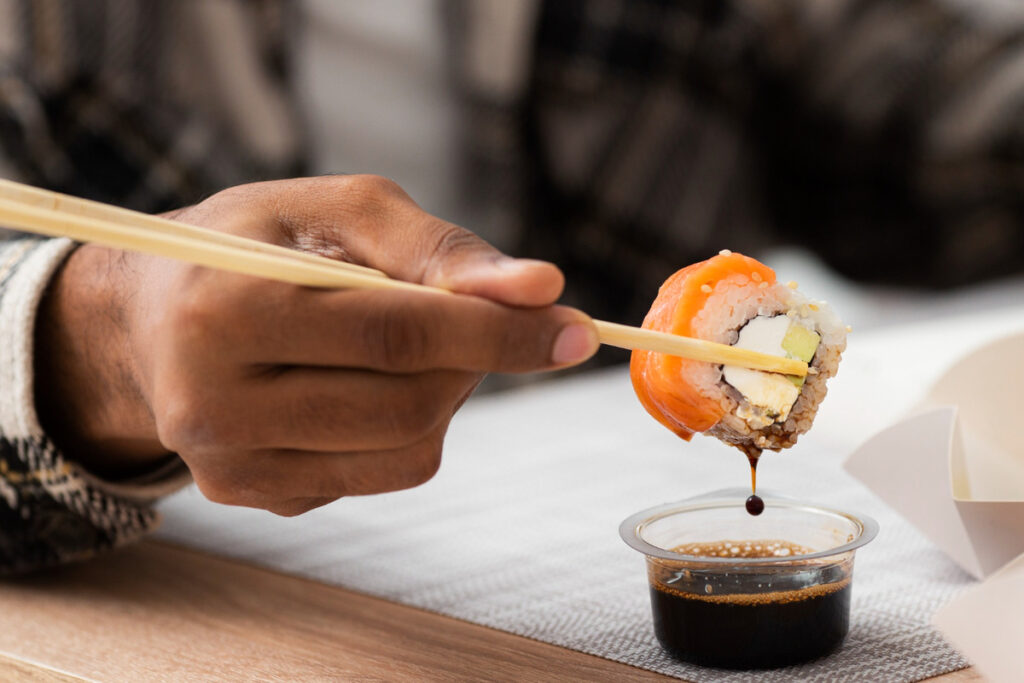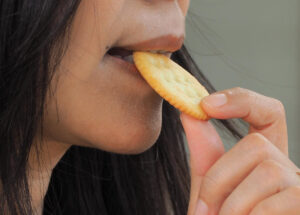Is sushi good for diabetics?
This is a question that many people living with diabetes ask when considering what to eat while dining out or preparing meals at home.
Sushi is often viewed as a healthy option due to its fresh ingredients and association with Japanese cuisine, but its impact on blood sugar levels can be complex.
Understanding the ingredients and how they affect glucose is essential for making informed decisions.
This article explores whether sushi is a good choice for people with diabetes, the risks and benefits involved, and how to enjoy it safely.
Is Sushi Good for Diabetics?
Sushi typically consists of vinegared white rice, raw or cooked fish, vegetables, seaweed, and various condiments.
While some of these components are nutrient-dense, others — especially the white rice — can raise blood sugar levels significantly.
White rice has a high glycemic index (GI), meaning it can cause rapid spikes in glucose after consumption.
Even small portions of rice can add up in carbohydrate content, especially when paired with sugary sauces or fried ingredients.
However, not all sushi is created equal, and certain types may be better suited for a diabetic-friendly diet.
Choosing sushi wisely involves understanding which elements contribute to blood sugar fluctuations and which provide nutritional benefits.
Understanding the Glycemic Impact of Sushi Ingredients
The main ingredient that raises concern in traditional sushi is the white rice, which is often sweetened with sugar and rice vinegar.
This preparation increases its glycemic load, making it a poor choice for individuals with diabetes if consumed in large quantities.
Raw fish like salmon, tuna, and mackerel are low in carbohydrates and rich in omega-3 fatty acids, which support heart health.
These proteins can help slow digestion and minimize glucose spikes when paired with lower-carb options.
Seaweed, used in many sushi rolls, is rich in minerals such as iodine and magnesium and has minimal impact on blood sugar.
Vegetables like cucumber, avocado, and bell pepper also add fiber and nutrients without significantly affecting glucose.
Soy sauce is low in carbs but very high in sodium, which can be problematic for those managing both diabetes and hypertension.
Spicy mayonnaise and teriyaki sauces often contain added sugars that can undermine blood sugar control.
By focusing on low-GI, high-protein ingredients and avoiding sugary or starchy components, sushi can be modified to fit a diabetic-friendly diet.
Best and Worst Types of Sushi for People with Diabetes
Some sushi options are better than others when it comes to managing diabetes.
Best choices include:
- Sashimi: Thin slices of raw fish without rice, offering protein and healthy fats without carbs.
- Naruto rolls: Made by wrapping fish and vegetables in cucumber instead of rice.
- Brown rice rolls: Brown rice has more fiber than white rice, slowing glucose absorption.
- Vegetable rolls: Avocado, cucumber, and other fiber-rich vegetables can balance carb intake.
- Temaki (hand rolls): Often made with less rice, and easier to customize.
Worst choices include:
- Tempura rolls: Deep-fried ingredients increase fat and calorie content and may impair insulin sensitivity.
- Dragon rolls or specialty rolls: These often include multiple sauces, fried toppings, and large amounts of rice.
- Sweet sauces like eel sauce or spicy mayo: These are high in added sugars.
- All-you-can-eat sushi: Encourages overconsumption, making it harder to control blood sugar.
Making smart menu choices helps diabetics enjoy sushi without compromising health.
Tips for Enjoying Sushi Safely with Diabetes
To enjoy sushi while managing diabetes, planning and moderation are key.
Start by eating a small salad or miso soup to reduce hunger before sushi arrives.
Limit the number of rice-based rolls and focus more on sashimi or vegetable-heavy options.
Request brown rice or ask for rolls to be made with half the usual amount of rice.
Avoid dipping sushi in excessive soy sauce, and consider low-sodium versions to reduce salt intake.
Skip sugary sauces and fried toppings, or ask for them on the side.
Pair your sushi with a protein-rich appetizer, like edamame or grilled chicken skewers, to stabilize blood sugar.
Be mindful of portion sizes and avoid overindulging, even with healthier options.
Check your blood sugar before and after the meal to assess how sushi affects your glucose levels.
These habits can help maintain glycemic control while allowing you to enjoy sushi responsibly.
Hidden Risks: Sodium, Mercury, and Other Considerations
In addition to blood sugar impact, sushi presents other risks that diabetics should consider.
Soy sauce and miso soup are extremely high in sodium, which can elevate blood pressure and strain kidney function.
This is particularly concerning for diabetics, who already face higher risks of cardiovascular and renal complications.
Certain fish like tuna, swordfish, and mackerel may contain high levels of mercury, especially when consumed frequently.
Mercury exposure can affect neurological health and is especially risky for pregnant women and those with compromised detoxification systems.
Some sushi-grade fish may also carry a small risk of parasites, particularly when consumed raw and from unreliable sources.
Choosing reputable sushi establishments and balancing fish intake with plant-based foods helps minimize these risks.
Healthy Sushi Alternatives and DIY Options
If you enjoy sushi but want tighter control over your ingredients, consider preparing it at home.
Use cauliflower rice or quinoa as a substitute for white rice to reduce carbohydrate content.
Wrap fillings in nori sheets or cucumber slices instead of using traditional rice-based rolls.
Add avocado, carrots, spinach, or bell peppers for fiber and nutrients.
Homemade poke bowls are another great alternative, combining diced fish with vegetables and a base like greens or legumes.
Use sesame oil, lemon juice, or vinegar as flavor enhancers instead of sugar-laden sauces.
Controlling ingredients allows you to enjoy the flavor of sushi while keeping it aligned with your dietary needs.
Natural Support for Blood Sugar Management
In addition to dietary strategies, some individuals find benefit in natural supplements that support glucose metabolism.
GlycoFortin is a liquid supplement designed to help maintain balanced blood sugar levels and support metabolic health.
It contains a blend of plant-based extracts and minerals including chromium, green tea, guaraná, Panax ginseng, Gymnema Sylvestre, and grape seed extract.
These ingredients work together to improve insulin sensitivity, reduce glucose absorption in the gut, and provide antioxidant protection.
GlycoFortin is easy to use and stimulant-free, with a single daily dose administered via dropper, either directly or mixed with water.
Its natural composition makes it suitable for those looking to complement a diabetic diet without adding synthetic ingredients or stimulants.
Many users report better energy, fewer cravings, and improved concentration throughout the day.
By supporting healthy blood sugar, GlycoFortin fits naturally into a diabetic lifestyle focused on prevention and wellness.
You Can Enjoy Sushi Without Compromising Your Health
Sushi can be part of a healthy, balanced diet for people with diabetes—if you make smart choices and stay mindful of ingredients.
Avoiding high-GI rice, sugary sauces, and fried elements is essential, while emphasizing lean proteins and vegetables helps stabilize blood sugar.
For additional support, GlycoFortin offers a natural way to enhance glucose control and energy balance.
To see how GlycoFortin can complement your nutritional goals, visit the official website and take a step toward better metabolic health.









